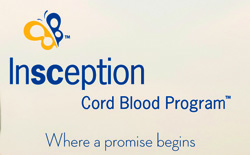Umbilical cord blood banking

Umbilical Cord Blood (UCB) banking is becoming very common and involves the collecting and storing of the blood found in the umbilical cord. After your baby is born, the placenta and umbilical cord are normally discarded. The blood from your baby’s umbilical cord is a rich source of special cells called stem cells. Stem cells are immature, ‘unspecialized’ cells. They are valuable because they can quickly divide and renew, and have the ability to mature into different cell types. UCB collection is very simple, painless, and poses no risk to mother and baby. A nurse, doctor or midwife will collect these cells from the umbilical cord once the baby has been delivered.
Life-threatening diseases such as certain types of anemia and cancers of the blood known as leukemia and lymphoma may be treated today through a bone marrow transplant, in which healthy bone marrow donated from another person is transplanted into a sick person. The stem cells from the transplanted bone marrow then work to replace the damaged or diseased cells.
The challenge with bone marrow transplants is that a sick person often needs bone marrow donated from another person. There must be a ‘match’ between the tissue types of the two people, so a suitable donor can be difficult to find. In these cases, a family member would be the most likely source of a match. Your baby’s stored cord blood might then be considered as a source of stem cells if a sibling or immediate family member was in need of a transplant.
In certain other conditions, stem cells saved from your baby’s own umbilical cord blood might be used if she (or he) needed a stem cell transplant. In that case, there would be no issue regarding tissue matching, since the stem cells would be a perfect match.
Studies have shown that there are some distinct advantages in using cord blood stem cells.
There are more than 75 medical conditions that might be treated with cord blood stem cells. Since the first transplant using UCB stem cells was performed over 20 years ago there have been over 20,000 cord blood transplants worldwide.
Expectant parents with no significant risk factors should have a realistic understanding of the potential uses and limitations of their baby’s stored cord blood. Parents should also be aware of the costs involved for public and private cord blood banking, and their rights and responsibilities if they participate.
The possibilities for the future are exciting. Research shows that cord blood stem cells have the potential to change into nonblood cell types such as neurons (nerve cells in the central nervous system, including the brain) or muscle or liver cells and may in the future have possible applications in the field of regenerative medicine. Current therapies under investigation include clinical trials using cord blood stem cells to treat such diseases and conditions such as Cerebral Palsy, Type 1 Diabetes, spinal cord injuries and Parkinson’s.
Here are some questions to ask when making your selection:
• How many successful transplants have been performed using stored samples from the bank?
• How long has the bank been operating and how many samples have been processed?
• Does their processing comply with Regulatory standards and guidelines (e.g. AABB, Health Canada)?
• What are the costs?
• Does the bank have a collaborative relationship with stem cell transplant scientists? Does it engage in research to improve stem cell banking techniques or to expand possible treatment applications for stem cells?
Barbara E. Cruickshank, MD, FRCS(C) G.R.E.I. Fellowship Programme Director, Centre for Fertility and Reproductive Health, Division of Reproductive Sciences, Dept. Obstetrics and Gynaecology, Mount Sinai Hospital




